Pallet Inverter: How Do Turbine Blade Plants Handle Oversized Pallet Rotations?
Handling massive, delicate, and incredibly valuable products like wind turbine blades presents a huge logistical challenge. Imagine trying to maneuver an object that is not only heavy but also awkwardly shaped. The risk of damage during handling is enormous, and a single mistake can lead to millions in losses and significant production delays. Traditional methods using cranes and slings are slow, require multiple skilled operators, and carry an unacceptably high risk of accidents. This is a problem I've seen across many heavy industries. The constant worry about safety and efficiency can keep a plant manager up at night. But there is a dedicated solution designed to solve this exact problem: the oversized pallet inverter. It provides a safe, controlled, and remarkably fast way to handle and rotate these giant loads.
Turbine blade plants handle oversized pallet rotations by using custom-engineered, heavy-duty pallet inverters. These powerful machines use adjustable hydraulic clamping walls to securely grip the entire load, including the pallet. The inverter then rotates the load a full 180 degrees, allowing for the safe and efficient exchange of pallets, or 90 degrees for inspection or assembly processes. This automated method eliminates manual handling risks and dramatically speeds up the workflow.
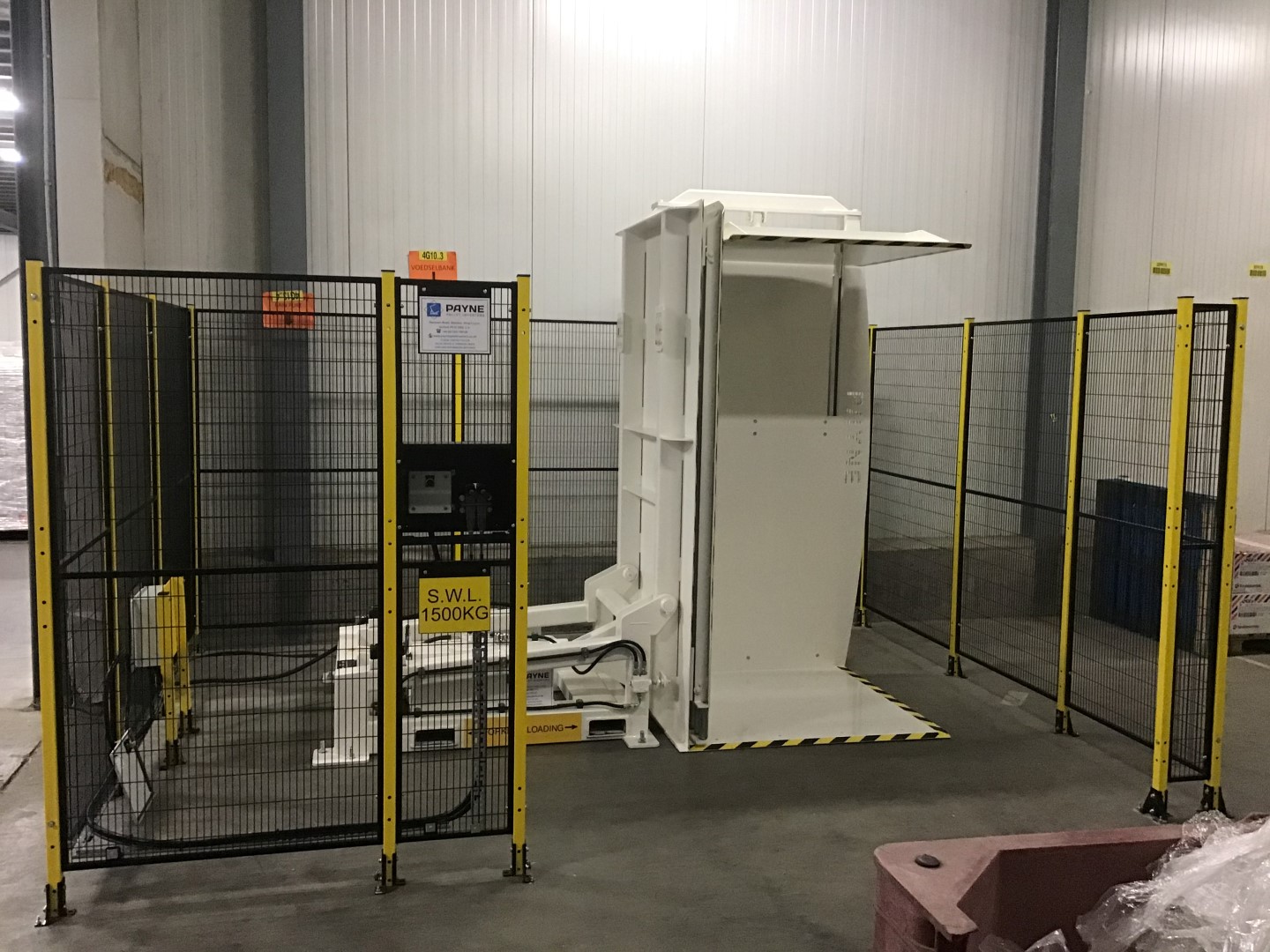
This solution might seem specific to the wind energy sector, but the underlying principles are universal. As an engineer who has spent my life in the packaging and material handling industry, I can tell you that the challenges of handling a turbine blade are not so different from those of handling a heavy steel coil, a large fabricated beam, or a pallet of sensitive materials. The core issues are always weight, size, safety, and efficiency. If you're running an operation like a steel mill, you understand these challenges intimately. So, let's look past the specific product and dive into the technology itself. You'll see how this solution can be a game-changer for your own operations.
Why is standard equipment not suitable for oversized loads?
You've likely faced this situation in your own plant. You have a non-standard, oversized load that needs to be moved or repositioned. The team brings in the heavy-duty forklift, but the load's center of gravity is off, making the whole setup feel unstable. Or, they rig it up with a crane, a process that takes too long and puts your expensive product at risk of being crushed or scratched by slings. Every moment feels tense. Your people are working slowly and carefully, but the risk of an accident is high. This isn't just inefficient; it's a major liability waiting to happen. The truth is, standard equipment is designed for standard loads. Forcing it to do a job it wasn't built for is a recipe for disaster. This is where specialized equipment, engineered for a specific task, becomes not just a better option, but the only sensible one.
Standard equipment is unsuitable for oversized loads because it cannot adequately manage the unique combination of extreme weight, large dimensions, and often imbalanced centers of gravity. Forklifts lack the stability and reach, while cranes and slings offer poor load control and pose a high risk of damaging the product's surface. This mismatch creates significant safety hazards and operational bottlenecks.
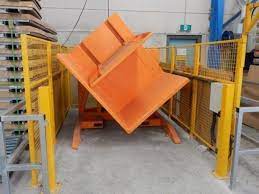
The Limits of Traditional Handling Methods
In my early days as an engineer, I visited a metal fabrication plant that was struggling with this exact issue. They produced large, custom-welded frames. They used a combination of two forklifts and a crane with slings to flip these frames for inspection. The process was painfully slow and required three to four operators. More than once, a frame had slipped, causing costly damage and nearly injuring a worker. They were using the tools they had, but they were the wrong tools for the job.
This is a classic problem. Let's break it down.
- Forklifts: A standard forklift is a fantastic tool for lifting pallets. But when the load is much wider or longer than the forks, it becomes unstable. The load's center of gravity shifts outside the safe zone between the forks, increasing the risk of tipping. Even if the forklift has the raw lifting capacity, it doesn't have the control to handle an unbalanced, oversized item.
- Cranes and Slings: Overhead cranes provide the lifting power, but they lack precision. Securing a load with slings takes time and skill. The slings can concentrate pressure on small areas, leading to dents, scratches, or structural damage, especially on finished or sensitive surfaces. Furthermore, controlling the sway of a suspended load is difficult and presents a major safety risk to anyone in the area.
Critical Factors for Oversized Loads
When you're dealing with high-value, heavy products, whether it's a wind turbine blade or a coil of high-grade steel, you need to think differently. The right equipment must provide stability, control, and protection. Let’s compare the options in a way that I know you, as a practical business owner, will appreciate.
| Feature | Standard Forklift | Crane & Slings | Oversized Pallet Inverter |
|---|---|---|---|
| Safety | Low (High risk of tipping) | Medium (Risk of slipping/swaying) | High (Load is fully secured) |
| Product Damage Risk | High (Unstable load) | High (Pressure from slings) | Very Low (Even pressure) |
| Speed of Operation | Slow and cautious | Very Slow (Complex rigging) | Fast (Automated cycle) |
| Labor Requirement | 1-2 Operators | 2-4 Operators | 1 Operator (Supervisory) |
| Control | Poor control over rotation | Poor control over rotation | Precise 90°/180° rotation |
| Footprint | Requires large maneuvering area | Requires large, clear overhead | Fixed, predictable footprint |
Looking at this table, the choice becomes clear. For a steel mill owner like you, Javier, this is directly applicable. Think about handling finished steel coils that need to be upended, or large fabricated parts that need to be moved from an in-house pallet to a shipping pallet. A pallet inverter provides a controlled, safe, and efficient solution that standard equipment simply cannot match.
How does a pallet inverter ensure the safety of both the product and personnel?
As a factory owner, I know that your number one priority is the safety of your people. A serious accident involving a multi-ton load is a nightmare scenario. It goes beyond the immediate financial costs of equipment damage and lost production. The human cost is immeasurable, and the impact on your company’s reputation and employee morale can be devastating. You also face regulatory scrutiny and potential fines. This is why any investment in new machinery must be evaluated first and foremost through the lens of safety. You worry that a new, powerful machine could introduce new risks. But a well-designed pallet inverter does the opposite. It is engineered from the ground up to remove risk from the equation, creating a secure environment for both your valuable products and your valued employees.
A pallet inverter ensures total safety by using a robust, pressure-adjustable clamping system that secures the load without causing damage. This core function is surrounded by layers of safety technology, including perimeter fencing, light curtains that stop the machine if a person enters the area, and dual-button controls that keep the operator's hands clear of moving parts during operation.
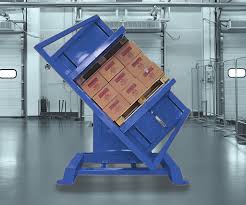
The Anatomy of a Safe Pallet Inverter
I once worked with a client who was hesitant about the upfront cost of a pallet inverter with a full safety package. Six months after installation, an operator, distracted for a moment, walked toward the active machine. The light curtain immediately detected his presence and shut the system down instantly. The machine stopped before he was even close to the danger zone. My client called me the next day and said, "That feature just paid for the entire machine." It's a story that highlights how safety isn't a cost; it's an investment that pays for itself.
A safe pallet inverter is built around a few key design philosophies:
- Robust Clamping System: This is the heart of the machine. It uses powerful hydraulic or electric actuators to apply even pressure across the entire face of the load. Importantly, this pressure is adjustable. You can set it to be strong enough to hold a steel coil securely but gentle enough not to crush a pallet of boxes.
- Strong Steel Frame: The entire structure is built from heavy-gauge steel to handle loads far exceeding its rated capacity. This provides the rigidity needed for a smooth, controlled rotation without any flexing or vibration.
- Controlled Rotation: The rotation is driven by a powerful motor and gearbox combination that ensures a smooth, predictable motion. There are no sudden jerks or stops that could shift the load.
Layered Safety Protocols
A modern machine doesn't rely on a single safety feature. It uses a layered system, where active and passive features work together to create a virtually foolproof environment. This is something you, with your engineering background, will appreciate.
| Safety Feature | Purpose | Benefit for Your Plant |
|---|---|---|
| Perimeter Fencing | A physical barrier that prevents accidental entry into the work zone. | Guarantees a clear, safe operating area, meeting safety regulations. |
| Light Curtains | An infrared beam that immediately stops the machine if crossed. | Protects operators from moving parts without needing a solid gate. |
| Dual-Button Controls | Requires the operator to use both hands to start a cycle. | Ensures the operator's hands are in a safe position, away from the machine. |
| Emergency Stops | Large, accessible buttons that kill all power to the machine. | Provides an immediate shutdown option for any unforeseen situation. |
| Pressure Sensors | Monitors the clamping force to prevent over-crushing or slippage. | Protects your product from damage and ensures a secure hold. |
| Load Stabilizers | Top-press plates or side supports for unusually shaped loads. | Adds an extra layer of security for unstable or non-uniform products. |
For a steel plant, these features are not just nice to have; they are essential. They create a predictable, low-risk process that aligns perfectly with the goal of a safe and efficient workplace. This is how you build a resilient operation.
What is the real return on investment (ROI) for an oversized pallet inverter?
Every major investment must answer one question: Will it make my business stronger? As a fellow business owner, Javier, I know you analyze every capital expenditure with a sharp pencil. A large machine like a pallet inverter is a significant line item on the budget. You need to see a clear path to profitability, not just a list of features. You might worry that it's a niche piece of equipment that won't deliver the broad cost savings you need to hit your ambitious target of an 8% reduction in overall operating costs. Let me reframe that. A pallet inverter is not an expense. It is a strategic tool for cost reduction and efficiency gain. When you analyze it correctly, the ROI becomes not only clear but compelling.
The real ROI for a pallet inverter is generated from multiple, compounding financial benefits. These include dramatic reductions in manual labor costs, the near-complete elimination of product damage during handling, significant gains in operational throughput, and savings from being able to switch from expensive in-house pallets to cheaper one-way shipping pallets.
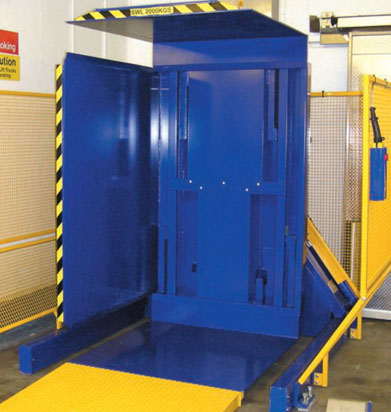
Quantifying the Savings
The best way to see the ROI is to break it down into tangible numbers. This isn't abstract; it's the same kind of practical analysis you apply to your entire operation. Let's look at the key areas where a pallet inverter directly impacts your bottom line.
- Labor Savings: Compare your current process to the inverter process. Let's say flipping a heavy load currently takes two operators 15 minutes. A pallet inverter can do the same job with one operator in 2 minutes. You save not just the direct time but also free up a skilled worker to perform value-added tasks elsewhere in the plant.
- Damage Reduction: This is a huge, often underestimated cost. How much does one damaged steel coil or fabricated part cost you? Consider the material cost, the lost labor, and the potential impact on customer orders. If your current method results in even one or two damaged loads per year, eliminating that cost can represent a significant portion of the machine's price.
- Throughput Gain: Faster handling means more products can move through the process each day. If a bottleneck in your packaging or shipping area is limiting your output, solving it directly translates to increased revenue.
- Pallet Savings: Many companies use high-quality, expensive pallets for internal movement and then have to transfer goods to cheaper, one-way shipping pallets. A pallet inverter makes this switch effortless. The savings on pallets alone can amount to tens of thousands of dollars per year.
A Case Study: From Cost Center to Profit Driver
Let's put this into a table that reflects the realities of a plant like yours. Assume a two-shift operation, 250 days a year.
| ROI Calculation Area | Calculation & Assumptions | Estimated Annual Savings ($) |
|---|---|---|
| Labor Savings | (1.5 operators saved) x ($30/hr wage) x (8 hours/shift) x (2 shifts) x (250 days) | $180,000 |
| Damage Cost Avoidance | (2 damaged loads/year) x ($25,000/load cost) | $50,000 |
| Increased Production Output | (20 extra minutes/day of production) x (Value of output at $1,000/hr) | $83,000 |
| Pallet Cost Savings | (Switching 100 pallets/day from $25 pallets to $10 pallets) x (250 days) | $375,000 |
| Total Annual Savings | Sum of all savings | $688,000 |
These numbers are illustrative, of course, but they are based on real-world results I've seen with my clients. The ROI is often achieved in less than a year. This isn't just a machine that helps you do a task; it's a strategic investment that directly contributes to your goals of higher productivity and improved profit margins.
How can a pallet inverter be integrated into a digitally transformed factory?
You are driving your plant towards a smarter, more connected future with MES, IoT, and data analytics. This is a forward-thinking strategy that I deeply respect. The last thing you want is to invest in a new piece of "dumb" equipment that becomes an isolated island in your data-driven ecosystem. A machine that cannot communicate creates a blind spot. It breaks the seamless flow of information you are trying to build and prevents you from achieving true, comprehensive production visualization. You need equipment that is not just physically powerful, but digitally intelligent. The great news is that modern pallet inverters are designed precisely for this. They are built to be integrated, to communicate, and to become a valuable data-generating node in your smart factory network.
A modern pallet inverter integrates into a smart factory through its onboard PLC (Programmable Logic Controller), which uses standard industrial protocols like Ethernet/IP or Profinet to communicate directly with your plant's MES. This connection allows for the automation of tasks, real-time data collection on every cycle, and remote diagnostics, making the inverter a fully transparent and contributing part of your digital transformation.
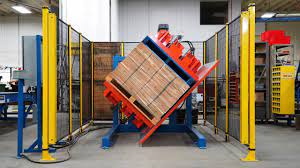
Connecting the Machine to Your Network
As an engineer, I get excited about how systems connect. This is where the real power lies. A pallet inverter is no longer just a mechanical device; it's a cyber-physical system. The brain of the machine is its PLC. This is the component that talks to the rest of your factory.
- PLC and Communication Protocols: The PLC can be programmed to speak the same language as your other factory systems. Whether your plant uses Siemens (Profinet) or Rockwell/Allen-Bradley (Ethernet/IP), the inverter can be equipped with the right communication module to plug directly into your network.
- Two-Way Communication: This is not just about the inverter sending out information. It's a dialogue. Your MES can send a command like, "Invert pallet ID #SM7892, using Program #3 (for steel coils)." The inverter executes the command and reports back, "Cycle for pallet ID #SM7892 complete. Duration: 115 seconds. No errors." This level of automation and tracking eliminates human error and provides a perfect digital record of every action.
Data-Driven Operations and Predictive Maintenance
This is where things get really powerful and directly support your goal of 95% equipment uptime through predictive maintenance. The data from the inverter is not just for records; it's for insight. By tracking key operational parameters, you can move from a reactive "fix it when it breaks" model to a proactive "fix it before it breaks" strategy.
Let's look at the kind of data you can get and how you can use it.
| Data Point from Inverter | What It Tells You | How It Helps You Achieve Your Goals |
|---|---|---|
| Cycle Count | The total number of times the machine has run. | Schedule maintenance based on actual usage, not just time. This is a core tenet of predictive maintenance. |
| Motor Current Draw | The amount of power the main rotation motor is using. | A gradual increase in current can indicate bearing wear or gearbox fatigue, signaling a need for inspection. |
| Hydraulic Pressure | The real-time pressure in the clamping system. | Fluctuations or a slow drop in pressure can point to a developing leak, allowing you to fix it during planned downtime. |
| Sensor Status | The on/off state of every safety and position sensor. | Instantly diagnose problems remotely. Your maintenance team knows if a sensor is faulty before even walking to the machine. |
| Error Codes | Specific codes for any fault or operational interruption. | Drastically reduces troubleshooting time. The machine tells you exactly what's wrong. |
By integrating a smart pallet inverter, you are not just adding a machine. You are adding a new source of intelligence to your operation. You are taking another step towards full production visualization and achieving the operational excellence that sets industry leaders apart. As a partner, we at SHJLPACK don't just deliver a machine; we help you integrate it into your digital vision.
Conclusion
Oversized pallet inverters are a strategic asset for any heavy industry. They are a powerful solution to improve safety, boost efficiency, and directly support your most important financial goals.


